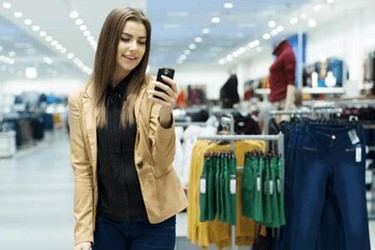How Millennials Can Be Lured Back Into Physical Stores

Three core values that help retailers re-engineer their business to attract millennials.
Millennials, who represent $200 billion in purchasing power, are the Mecca for today’s retailers. But if the stereotypes are to be believed, Millennials avoid brick-and-mortar stores like the plague due to the convenience of online shopping and an aversion interacting with actual people. The truth is that these same Millennials can be lured back to physical stores and even turned into faithful customers if retailers re-engineer their business around 3 core values: Speed, Personalization, and Efficiency.
World Wide Technology’s Matt Sebek works directly with retailers building these types of programs, and in an email interview with Innovative Retail Technologies, he spoke to the core tenets to demonstrate how retailers can adopt Millennial-friendly programs and find success.
1. Speed. Reducing wait times and dispersing lines is essential to keep this generational group from walking out the door.
Sebek explained: “Some people may interpret a rise in self-service checkout stands and the consistent growth of online shopping as an indicator that Millennials dislike interacting with retail store staff, but these habits actually speak to a desire for speedy service. If retailers are able to reduce wait times and de-centralize lines, they will find that Millennials are much more likely to shop in store. In the quick service space, companies like McDonald’s have installed self-service kiosks alongside their traditional counter cashiers, each with their own dedicated lines, to mitigate wait times. Other companies like Chick-fil-A and In-N-Out Burger are solving the same problems by sending employees with tablets to drive-thrus at peak hours to take orders and payment.”
2. Personalization. Millennials have a different definition of the word “privacy” and are willing to divulge a lot of information about themselves to a retailer as long as they benefit from the exchange. Millennials expect to see loyalty apps updated 4-6 times a year and associate an out-of-date app with a stale brand. Continuous reinvention is necessary here.
When it comes to personalization, Sebek asserts, “Millennials are more than happy to chat with retail store employees as long as they get good value from the interaction. Being greeted by name or having their usual lunch order queued up with the kitchen before they step up to the counter is the type of interaction an attentive employee can provide that Millennials appreciate.”
However, Sebek notes, while “Millennials have a more fluid definition of “privacy”…that does not mean that they are willing to share their personal information with every retailer they come upon. However, they can be convinced to trade their personal information for something they view as valuable such as one-click credit card checkout for repeat purchases. Retailers like Starbucks use applications to personalize the in-store experience through customized orders, in-store pickup and purchasing credit.”
And “forward-thinking retailers have re-geared their programs to focus on experiences that cater to each customer. For example, Sephora’s three-tier loyalty program lets customer accumulate points to spend on free gifts of their choice and offers them access to beauty workshops and entices customers to unlock higher levels of the loyalty program to earn free makeovers and launch party invitations.”
3. Efficiency. Nothing irks a Millennial more than having their heart set on a certain product after extensive online research, only to find its out of stock when they get to the store. Many companies are adopting an “Endless Aisle” approach, which integrates brick-and-mortar and online properties so when a product is out of stock in a store it can be shipped straight to the consumer.
According to Sebek, “Millennials are known to extensively research big purchases before they set foot in a store, which is why finding their desired item out of stock is the easiest way to disappoint them and lose an easy sale. Brick-and-mortar stores are fighting this by adopting an “endless aisle” approach that allows them to integrate their network of stores and online presence to ship items directly to a customer if not available in store. The next step for endless aisle is to offer customer a real-time glimpse of store-by-store inventory so they can see which store has a desired item in stock.”
